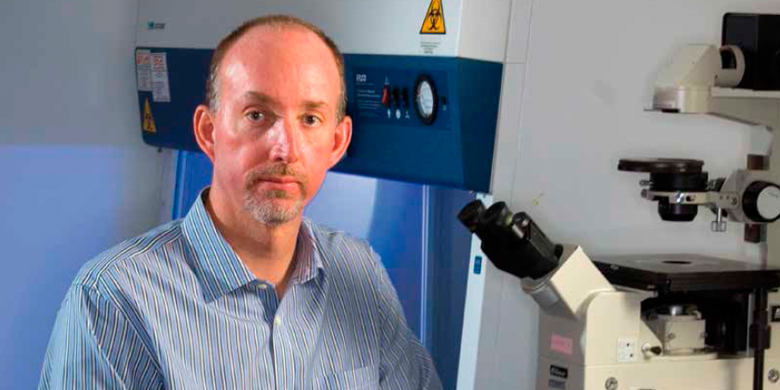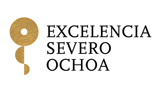“We are still a several years away from making cell replacement therapy a reality”
Scientific Director of the Penn Institute for Regenerative Medicine - “We are still a several years away from making cell replacement therapy a reality” - Edward Morrisey
In 2012, the Japanese scientist Shinya Yamanaka received the Nobel Prize for Medicine for his pioneering research on stem cells. Yamanaka’s achievement was to obtain pluripotent stem cells from adult cells (induced pluripotent stem cells; iPSC) by manipulating a small set of transcription factors. Although the method has proved to be effective, it has yet to lead to the ultimate goal: the regeneration of organs from adult stem cells. Teams of researchers across the world are working toward this goal, and their findings promise significant advances. Leading stem-cell researcher Edward Morrisey visited the CNIC recently to deliver his seminar on the development and regeneration of the cardiovascular system. Dr. Morrisey is optimistic that the goal of regenerative medicine will be achieved, and sees several opportunities for partnership with the CNIC
In 2011, you published a paper in Cell Stem Cell about a new way of making induced pluripotent stem cells without the standard four transcription factors. How has this work developed in the time since then?
Since that paper there have been many excellent advances that have increased the efficiency of iPSC generation. We decided to focus on the role of miR302-367 in tissuespecific stem/progenitor cells. Our iPSC Core at Penn has been generating iPSCs using the Sendai virus method, which we have found to be the most efficient of the methods we have tried.
The ultimate goal of making iPSCs is regenerative medicine, but we still seem to be a long way from clinical applications. What would you say are the next steps and when do you envisage that regenerative medicine will become a reality for patients?
While the innovation of iPSC technology has increased our access to pluripotent stem cells, there is still much that is unknown about how these cells can be differentiated into useful cell lineages. Most of the cell lineages derived from ES/iPSCs are immature, and in many cases this seems to limit their utility for regenerative therapies. Moreover, our ability to engraft into tissues such as the heart is still very primitive and inefficient. Cell replacement therapy is likely several years away and for some tissues may not be the ideal way to promote regeneration.
During your visit to the CNIC you talked about the development and regeneration of the cardiopulmonary system. Do you think that this is the most important area where regenerative medicine could be applied?
The 2 tissues that form the cardiopulmonary system (cardiovascular and pulmonary) utilize very different mechanisms to respond to injury. The mammalian heart has a limited repertoire of responses to acute ischemic injury and chronic injury. In mammals, there are no truly robust mechanisms to replace lost myocardium. In contrast, the lung is a truly regenerative organ, and lost tissue can be regenerated in vivo through various mechanisms, including activation of regional stem/progenitor cells followed by proliferation and differentiation. While different, these two tissues are involved in most morbidity and mortality in the Western world. So understanding how they respond to injury and defining mechanisms to promote repair and regeneration are of paramount importance.
Which diseases do you think would most benefit from regenerative medicine?
My bias would be toward the heart and lungs given their predominance in causing human disease. However, there are other organs in which regeneration could be improved by a better understanding of the in vivo mechanisms, such the liver and pancreas.
What can you tell us about the molecule miR302-367?
This is actually a cluster of microRNAs that is highly expressed during early development. They promote cell proliferation while inhibiting differentiation. miR302- 367 molecules act in part by inhibiting the Hippo signal transduction pathway.
Do you think that regenerative medicine receives enough funding?
As new discoveries refine our understanding of tissue regeneration, allocation of resources to the most promising avenues of research will be important. At least in the US, there is a growing crisis because of insufficient funding for basic science while there is an increased emphasis on trying to translate current knowledge into new therapies. While generating new therapies is the ultimate goal of what we do, many of the funding agencies are pushing too hard on that end of the discovery spectrum. This is causing an imbalance of priorities at a time when there are incredible opportunities to explore the basic understanding of disease processes.
What is your impression of the CNIC? Do you see opportunities for joint projects?
I was impressed by the full spectrum of research being performed at the CNIC. This type of resource balancing is important and the CNIC provides an excellent model of how to do it. The core facilities are incredible and the organization is something that we in the US could learn from. As for collaborations, there were several areas of interest, including the basic understanding of how developmental pathways are re-utilized during tissue regeneration and the possibilities of using large animals to explore translational opportunities for cardiac regeneration.











